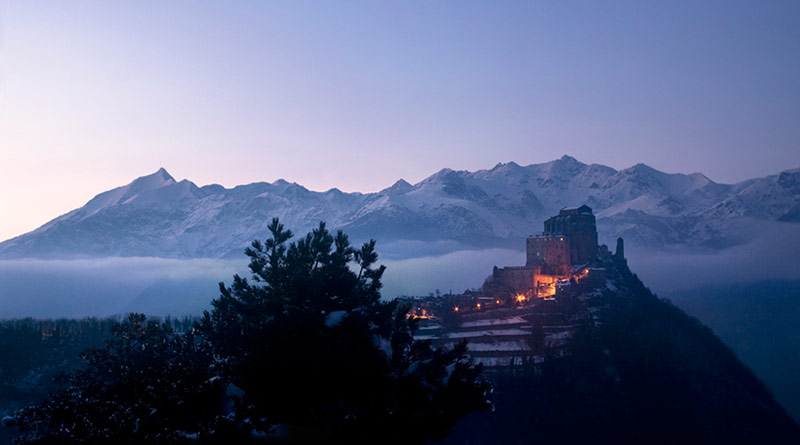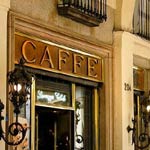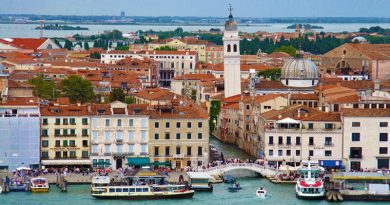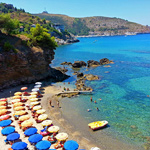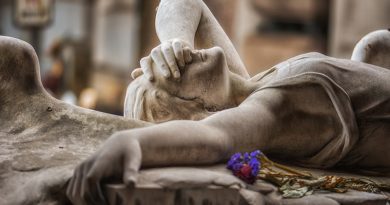Sacra di San Michele: a Mysterious Monastery high up in the Mountains
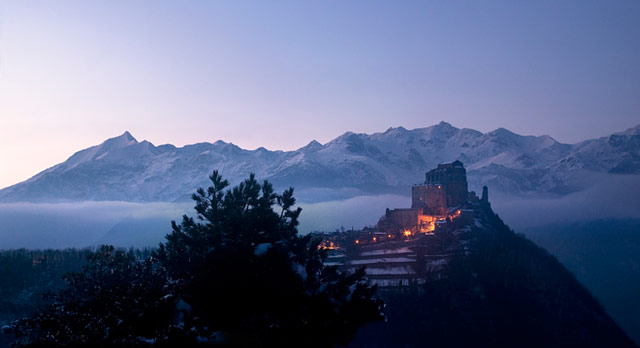
Symbol monument of the Piedmont region, the abbey of San Michele is undoubtedly one of the most striking architectural highlights of the province of Turin. Just like the Superga Basilica, another highlight of the region, the Sacra of San Michele is shrouded in legend, mystery and macabre details.
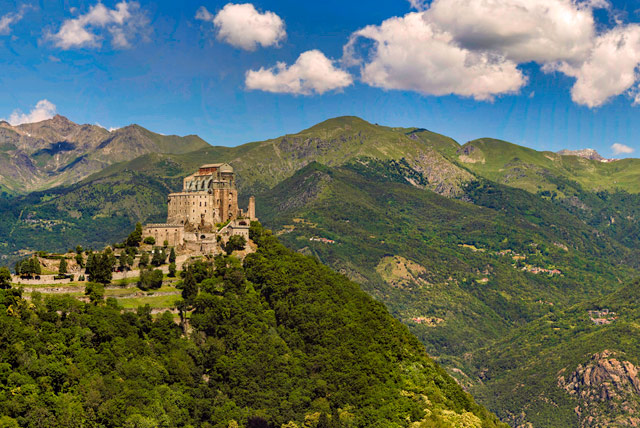
Founded on the rocky spur of Mount Pirchiriano in the Val di Susa (Susa Valley) between 983 and 987, the Sacra, also known as the Abbazia della Chiusa, is one of the sacred sites dedicated to the Archangel Michael.
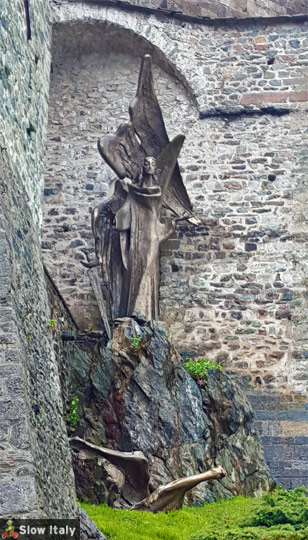
Mysteriously, the three most important medieval monasteries venerating Saint Michael in Europe are all located on the same axis, one straight pilgrimage route, known as Via Sancti Michaelis, going from the Mont Saint-Michel in Normandy (France) to Monte Sant’Angelo (Monte Gargano) in Puglia (Italy). The Sacra di San Michele is located exactly at the midpoint of this 2000km long pilgrimage route.
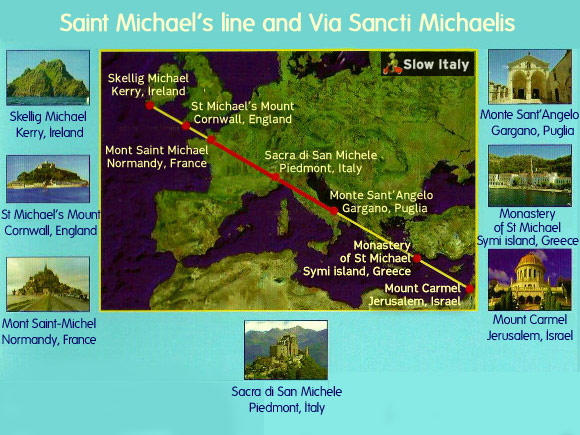
Perhaps even more surprising is that the Sacra di San Michele lies in perfect geographic alignment with three other Saint Michael monasteries, on a straight line going from Skellig Michael (Ireland), over Saint Michael’s Mount (Cornwall, England), including the pilgrimage route previously mentioned, to the Monastery of Saint Michael (Symi island, Greece) before coming to an end in Jerusalem, at Mount Carmel.
Lines like this axis are known as ley lines, believed to be a system of energetic highways, with the same purpose or meaning as the chakras and acupuncture meridians in the human energy body.
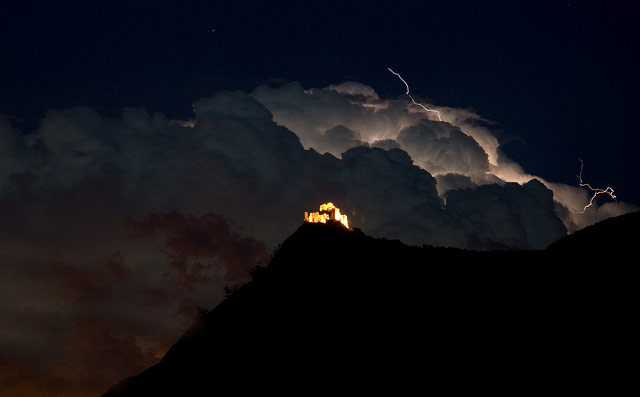
From an architectural point of view, the Sacra is one of the largest religious Romanesque complexes in Europe, resulting from the construction and consecutive enlargements made over a millennium, giving the impression that the ancient monastery has grown out of the rocky spur on which it was built. In fact the monastery developed from three chapels built in the rock under the present basilica. The three chapels of the original nucleus were transformed into tombs were twenty-four members of the Savoy house were buried in the 11th century.
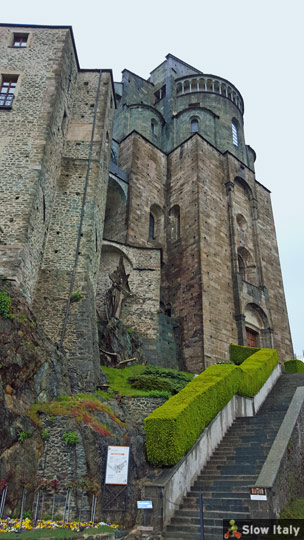
Just like the other sacred sites dedicated to the Archangel, the summit of Mount Pirchiriano, culminating at an altitude of 962m, was not chosen by accident. From earliest times, mountain summits and hills were regarded as the most appropriate places for the veneration of the Archangel Michael, probably as a real-life metaphor for his highest place among the Angels.
A further peculiarity of the Sacra is that it was mainly built with stones of oceanic origin. The calcareous base of the monument stems from the settling of calcareous plankton mixed with different types of clay carried by submarine currents, before the Alps were formed. The prasinites used for the top of the Sacra and the wonderful sculptures of the apse were formed by the transformation of submarine lavas which flowed from volcanoes along the pre-alpine oceanic ridge. Inside the Sacra you can find materials of ancient coralline origin: the marbles of the impressive gateway of the Zodiac. This piece of art is the work of the sculptor Nicolo’ and local craftsmen (beginning of the 12th century).
The steep staircase going from the entrance to the Zodiac gateway (Portale dello Zodiaco) goes by the obscure name of Scalone dei Morti (Staircase of the Dead), reminiscent of the bodies of dead monks that used to decorate the niches on either sides of the staircase. It is said that until recent times, skeletons of dead monks were still visible.
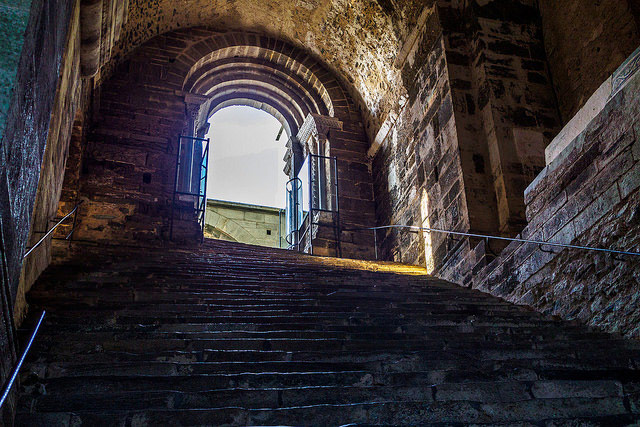
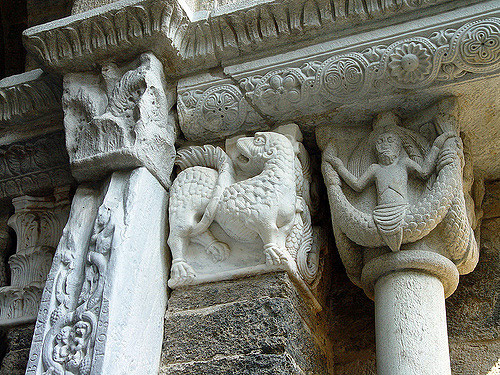
The three aisles inside the Church show the passage from the Romanesque style (the apse) to the Gothic style. The old choir contains frescoes and paintings from the beginning of the 16th century, such as the Triptych and The Virgin on the Throne by Defendente Ferrari, a piemontese painter from Chivasso.

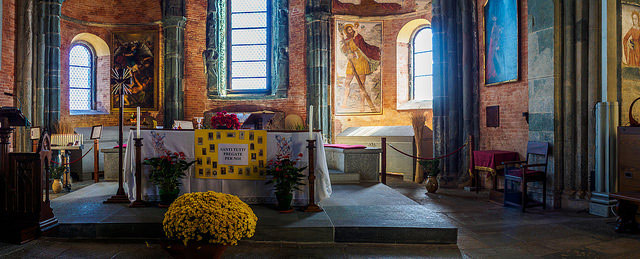
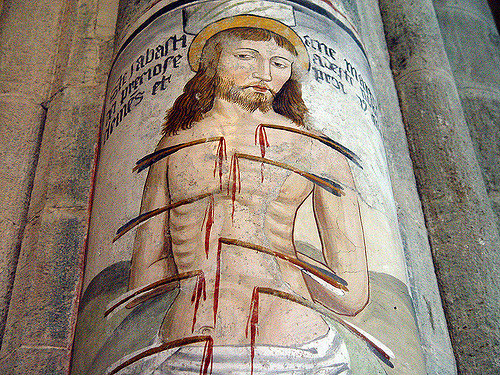
The Monks Door leads to the terrace with views over the ruins of the new monastery (12th to 14th centuries) as well as the Tower of the Beautiful Alda (Torre della bell’Alda) and an unfinished bell tower.
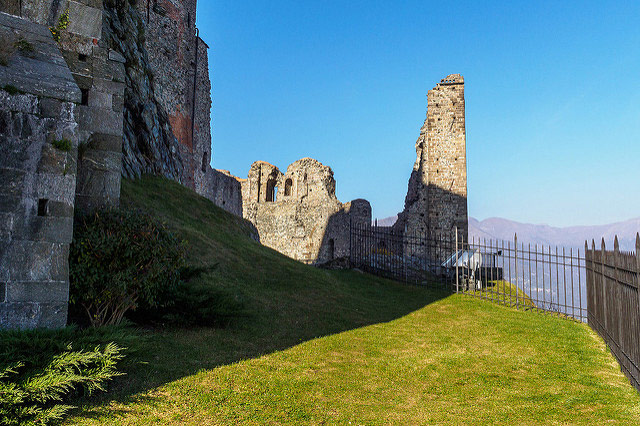
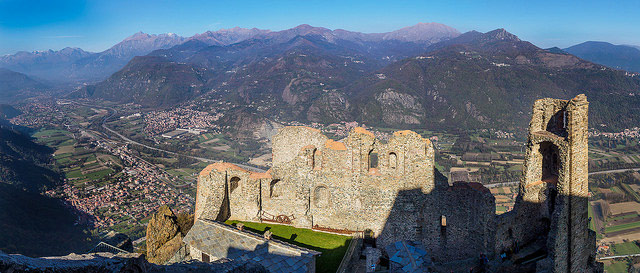
Legend has it that a beautiful peasant girl, named Alda, was ambushed by enemy soldiers when she visited the Sacra to pray against the evils of war. As she tried to escape their assault she found herself trapped at the top of the tower. Left with no other choice but to throw herself into the ravine she invoked the help of St. Michael and the Virgin and miraculously survived, landing unhurt at the bottom of the precipice.
Out of vanity she recklessly tested the angels with a second leap believing she would be able to repeat her flight in front of the unbelieving villagers. Unfortunately, as miracles never happen twice, she met her fate at the bottom of the rocks below.
How to get there:
The Sacra is administratively situated within the territory of the comune of Sant’Ambrogio di Torino (Piedmont), but accessible by car from Avigliana (or from Turin, exit Avigliana Est), or following a hiking trail from Sant’Ambrogio di Torino.
By train: take the train from Porto Nuevo station in Turin to Avigliana (end station is Susa). At the station of Avigliana you can get a shuttle to the main parking. From the parking you walk about 800m to the Sacra.
Opening hours:
In Winter: from October 16 to March 15
weekdays: 9:30-12:30; 14:30-17:00
Sundays and festive:days: 9:30-12:00; 14:40-17:00
In Summer: from March 16 to October 15
weekdays: 9:30-12:30; 14:30-18:00
Sundays and festive days: 9:30-12:00; 14:40-18:30
Photo credits: all photos © Slow Italy, except (top to bottom): Sacra at night © Roberto Bertero / bertero.weebly.com; Sacra di San Michele by BillH-GSACC; Zodiac gateway by Pietro Izzo; Sacra San Michele night view © Mat738; Staircase of the Dead (1 photo), inside the Sacra (2 photos), Torre della bell’Alda and panorama by Alexander Schimmeck;
Related articles:
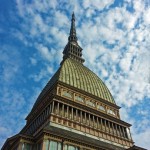
10 Reasons why Italy should be on your Italy bucket list
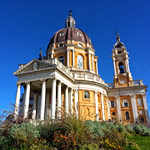
Superga: a basilica, a tragedy, and the birth of a legend

